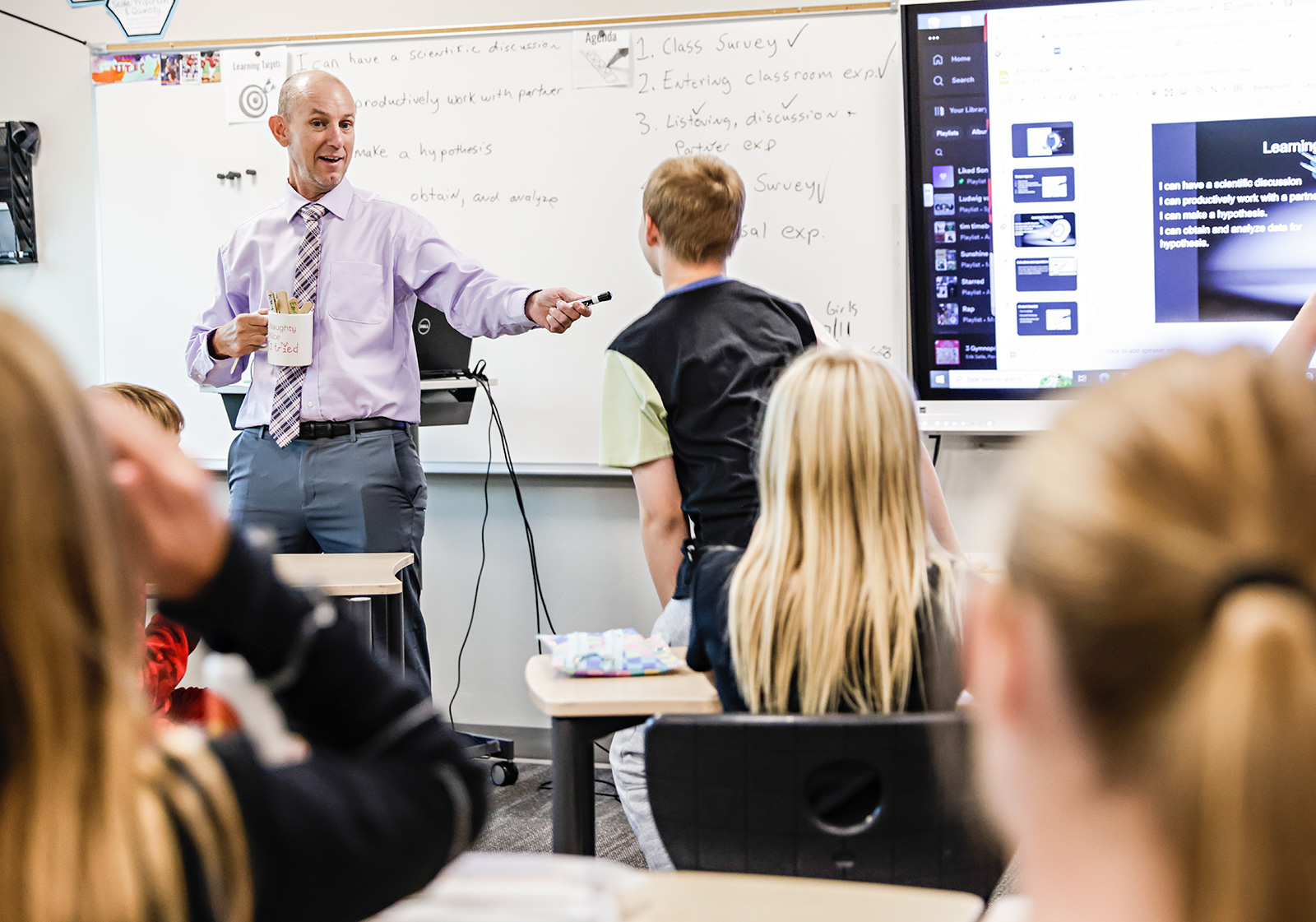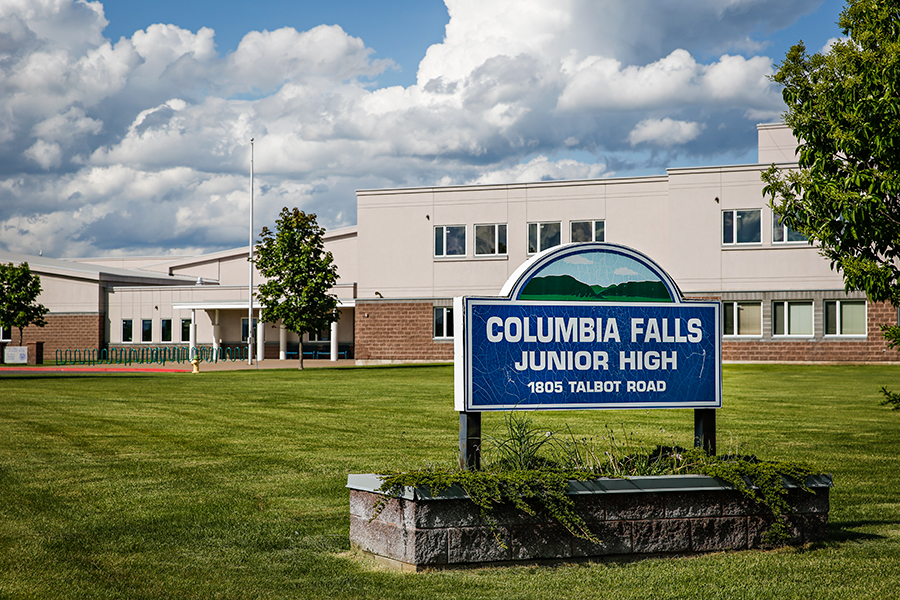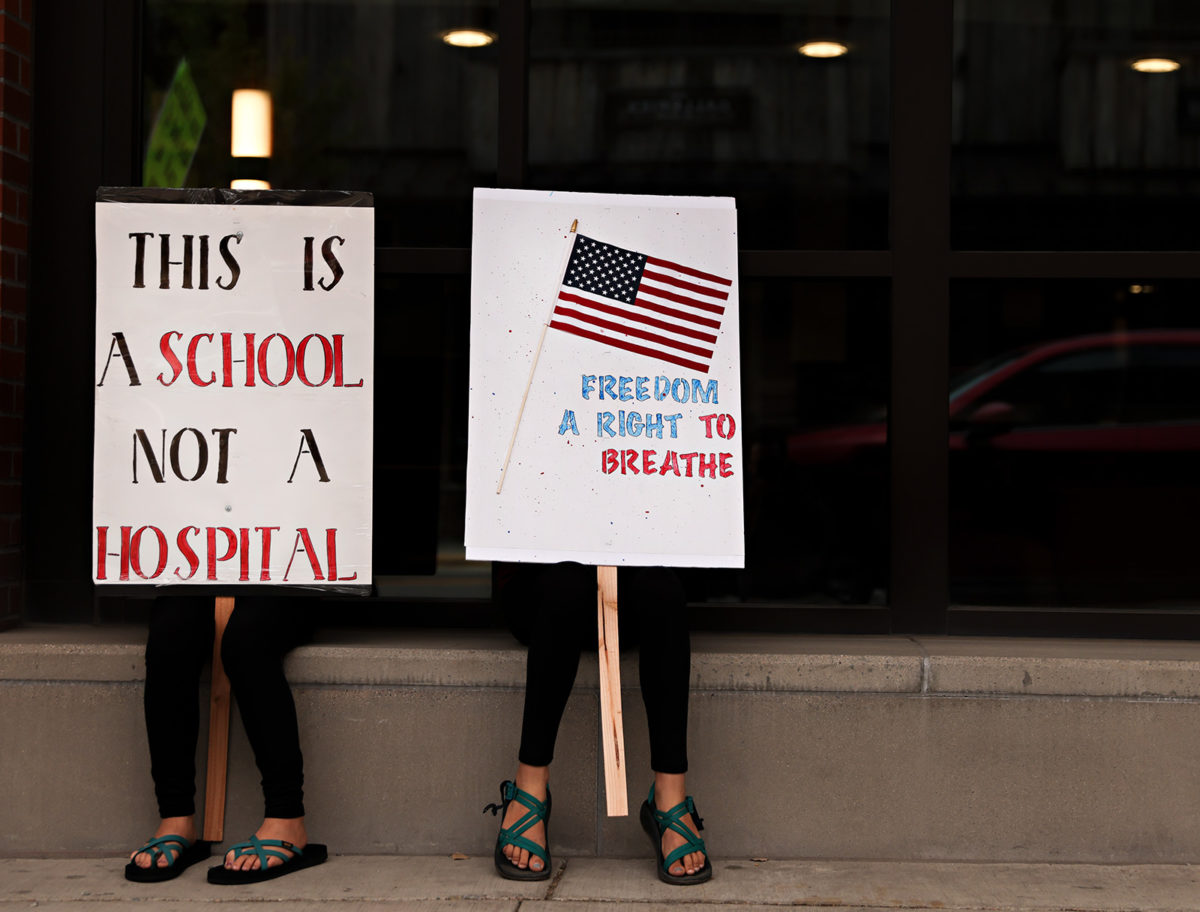‘Who’s Going to Teach My Kid?’
Stagnant salaries, high housing costs and a souring public opinion around education have made it difficult for school districts to recruit and retain teachers. This fall, the Flathead Valley’s public schools are feeling the effects.
By Denali Sagner
After Lakeside Elementary School found itself without a single special education teacher ahead of the 2023-24 school year, the school’s principal, Steffanie Broyles, moved her office into one of the special education classrooms. That way, students could come to Broyles for extra support as substitute teachers oversaw the classrooms once staffed by certified special education professionals. District administrators hoped it would be a temporary solution that would buy more time to find qualified teachers without letting students down.
“She already had the equivalent of about three full-time jobs,” Somers-Lakeside School District Superintendent Joe Price said of Broyles. “This is just another one.”
From his office at Somers Middle School on Sept. 5, the first day of school for the small, rural school district, Price described a back-to-school landscape marked not just by new notebooks and cool fall air, but also by a shortage of qualified teachers and paraprofessionals that has left districts like his scrambling to fill increasingly glaring vacancies. Somers-Lakeside is one of seven school districts in the Flathead Valley with open teaching positions, and one of hundreds across Montana. Price and other Flathead County school administrators pointed to a number of factors creating the teacher shortage, namely inflated housing prices, low pay and a climate of skepticism and distrust around public schools in recent years, specifically since the COVID-19 pandemic.
“I’ve certainly had people express concern to me,” Price said. “Emails and phone calls that I get from people worried about, ‘Who’s going to teach my kid?”
Currently, a number of school districts in Flathead County have vacancies for both certified teachers and classified staff members, such as crossing guards, food service workers, teaching assistants and nurses. There is one teaching vacancy in the Bigfork School District; four in Columbia Falls; one at Fair-Mont-Egan; two in Kalispell; one in Smith Valley; three in Somers-Lakeside; and two in Whitefish. According to the Montana Office of Public Instruction (OPI), 661 out 825 schools in Montana were impacted by what the office called a “critical quality educator shortage” as of the 2022-23 school year.
The shortage of teachers in Montana tracks with national trends that have shown fewer and fewer young people entering the field of education in recent years. In the 2019-2020 school year, American colleges and universities conferred 85,057 bachelor’s degrees in education, about 4% of the total degrees issued that year. The number was down almost one-fifth compared to 2000-01, when higher education institutions conferred more than 105,000 bachelor’s degrees in education, representing roughly 8% of all undergraduate degrees, according to the Pew Research Institute. In an even more stark comparison, education was the most popular field for American undergraduate students during the 1970-71 school year, during which colleges and universities conferred 176,307 bachelor’s degrees in education, or 21% of all degrees.
“I think it’s just the scrutiny that education is under right now,” Cory Dziowgo, superintendent of the Columbia Falls School District, said.

Flathead County school administrators described a political climate that has become increasingly critical of teachers — one that has driven countless educators out of the profession and discouraged others from entering it. Anger towards teachers and misinformation about the day-to-day workings of public schools have made the job less enticing, just as local districts need teachers most.
For educators, the unfavorable climate surrounding schools can be traced back to the COVID-19 pandemic and bitter fights over masks that created a rift between parents and teachers. In 2020, opposition to mask mandates inspired a slate of conservative school board candidates in the Kalispell School District who charged teachers with promoting left-wing politics in classrooms and a “communist agenda that is creeping it’s (sic) way into our schools,” according to Heather Asher, a then candidate and the current chair of the Kalispell school board.
Debates spawned by COVID-19 mitigation measures did not fade after the pandemic, but rather transformed into what is now the politically powerful “parental rights” movement, which has pushed school boards and lawmakers to alter school policies that allegedly shut parents out of the classroom. Parental rights activists have advocated for parents to be able to inspect lesson plans, observe classes, remove their children from lectures they deem objectionable and require permission for their children to join new clubs or use preferred pronouns. Many such policies were already on the books in schools, but were clarified during a state legislative session that saw a record number of education bills, and parental rights bills, more specifically.
Dziowgo said that the increasingly critical “narrative on education” has made it difficult to recruit and retain quality staff who may have otherwise been eager to work in local schools.
“The toughest part of hiring an elementary teacher used to be screening all of the applicants,” the Columbia Falls superintendent said. “Now the issue is: can we get one?”

On top of the souring climate around public schools, the combination of stagnant salaries for teachers and skyrocketing local housing costs have made it even more difficult to draw educators to the Flathead Valley.
According to data from the National Education Association, teacher salaries have failed to keep up with rising costs of living across the United States. Nationally, teachers make $3,644 less on average than they did 10 years ago, when adjusted for inflation.
In Montana, the economic reality for educators is even darker.
As of the 2021-22 fiscal year, Montana ranked 51st in the nation for average starting teacher salary at $33,568 (a list that includes the District of Columbia). For average teacher salary, the state did only slightly better, coming it at 44th, or $53,628 annually.
Last school year, the starting salary for teachers was $34,652 in Kalispell; $34,395 in Bigfork; $35,807 in Columbia Falls; $30,682 in Creston; $34,030 in Evergreen; and $41,830 in Whitefish.
The Montana Legislature in 2021 passed the TEACH Act, a bill that offered school districts incentives for giving raises to their teachers, in response to the state’s low teacher pay rankings. Lawmakers passed an updated version of the TEACH Act in the most recent legislative session, which expanded eligibility requirements for teacher raises.

While the state has worked to offer raises, a pandemic-era migration boom has fundamentally reshaped the housing market in the Flathead Valley, inflating costs and pricing many longtime residents out of their homes. The median sales price for a home in Flathead County was $575,000 in May 2023, compared to $349,500 in May 2020. Rent prices have also risen steeply, with the average rent in Flathead County sitting at about $2,500 per month over the last year, according to the Zillow Observed Rent Index.
Across the board, Flathead Valley school administrators reported that even if they found qualified candidates for school positions, many candidates had to turn down job opportunities after they were unable to find somewhere to live.
“In some of those cases they had already agreed and signed a contract, and they had to call and back out,” Laurie Barron, superintendent of the Evergreen School District, said. “It was just really difficult for them to find housing.”
While the Evergreen School District is fully staffed with certified teachers, it has a number of classified and part-time roles open.
Dziowgo, who moved up from Wyoming to become the superintendent of the Columbia Falls School District earlier this summer, called the housing crisis for educators “a very near and close reality for me” after his own family struggled to find a house in the valley.
“We hear our current staff talking about rents changing, housing interest rates, and finding a place [to live] as being a part of their story on remaining in education,” he said. “Hopefully people are keeping their skill set in education because it’s helping kids, but you have to make ends meet.”

As high housing costs make it difficult to convince teachers to move to the Flathead Valley, school districts are forced to compete with one another to recruit educators who already live locally. Price said three of the teachers who worked at Somers-Lakeside last school year moved to the Whitefish School District this year, and one other took a position with the Flathead Special Education Cooperative, all to the tune of considerable raises — raises that Somers-Lakeside is not in the position to offer.
“What it really comes down to is that we don’t have new graduates coming out of college, and even if we do, they can’t afford to live here,” Price, the Somers-Lakeside School District Superintendent, said. “The only people who can really afford to take a job in education here are people that somehow already live here, and that creates a situation where the most viable candidate for a job opening that I have is somebody that’s working for a different district [in the Flathead Valley].”
OPI has created a number of programs designed to help school districts recruit teachers, but local administrators across the board reported that the programs have done little to help. At virtual teacher job fairs, employers have outnumbered employees by considerable margins. OPI has also successfully pushed to loosen teacher certification requirements in order to get more people in the classroom, a move that Price called “a desperation measure in a really tough time.”
“Lowering the requirements to be certified, I see as part of the general disrespect of teachers,” he said. “A teacher has to have a bachelor’s degree, very specific training, and on-the-job experience in order to be certified. When you lower those requirements, it lowers everybody in esteem. That’s not a long-term solution. That’s an insult.”

As teachers and students settle into the familiar patterns of the school year, the valley’s administrators said they are filling gaps in the way they always have — finding creative solutions and leaning on the staff that they already have. Substitute teachers are transitioning to full-time roles, lunch staff are serving more kids with fewer hands, and administrators are adding tasks to their plate to help take the load off teachers.
“We’re meeting students’ needs and making adjustments,” Evergreen’s Barron said. “We’re super excited to have the staff we have — that of all of the opportunities in this valley, the staff chose and continue to choose the Evergreen School District.”
For Price, the solution lies in reshaping the culture around education and addressing low teacher salaries.
“The people who are in education are here because they really love it and they think it makes a difference,” Price said. “I feel good about what I do. I’ve done it for a long time. But I don’t know if I would go into it today.”
“I don’t know that I would advise a child to go into education, when you’re going to assume thousands and thousands of dollars in student debt to get a job that pays less than $40,000 a year to start,” the superintendent added after a pause. “That’s not very practical.”